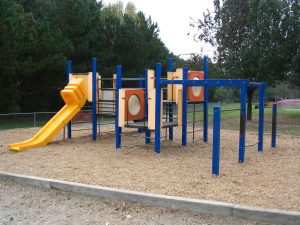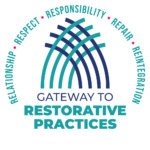
Use the most strategic positions for supervising students to ensure their health and safety. Observing the total setting involving students is essential to effective guidance. Proximity: stay close by when younger children are still learning to play together. Keep moving! Activities can change constantly.
Be Alert
Observe and engage students in activities. If you’re alert, you’re in a better position to anticipate potential difficulties. Can step in to prevent problems. If you see something you need to report to a teacher, write it down so you don’t forget. It could be an ongoing behavior challenge or an observed success that a student finally accomplished such as a new social skill. Carry a pad of Post-it Notes and pen or pencil for jotting down quick observations.
Incorrect Educator Response
Two educators are hanging out talking to each other about the latest movie they saw while ignoring students who are shoving each other and calling each other names.
Here’s How to Use Strategic Positions
Rotate and cover specific areas weekly or every other week. Why? First, it is equitable. The same person shouldn’t get the easier or nicer roles like an area that’s shaded when it’s hot or the area that no one likes. Second, rotation prevents boredom which often results in lax discipline and inconsistency. At one site I was told that they couldn’t rotate because they had less experienced educators. Ultimately, the goal is to get everyone trained and competent in supervising every area, so rotation is possible.
Image Source:
Chattahoochee-Elem-School-Playground-Flickr.com

